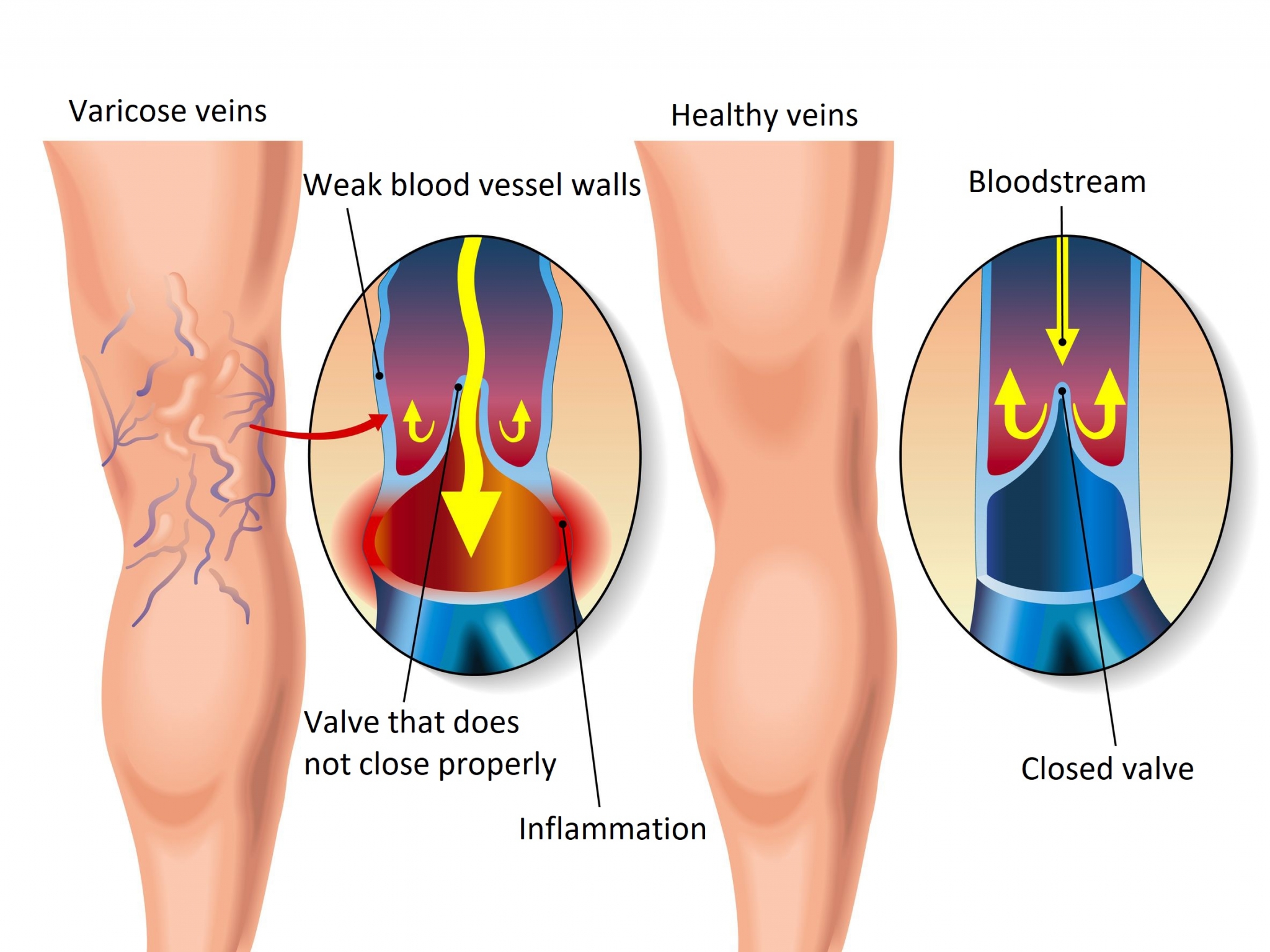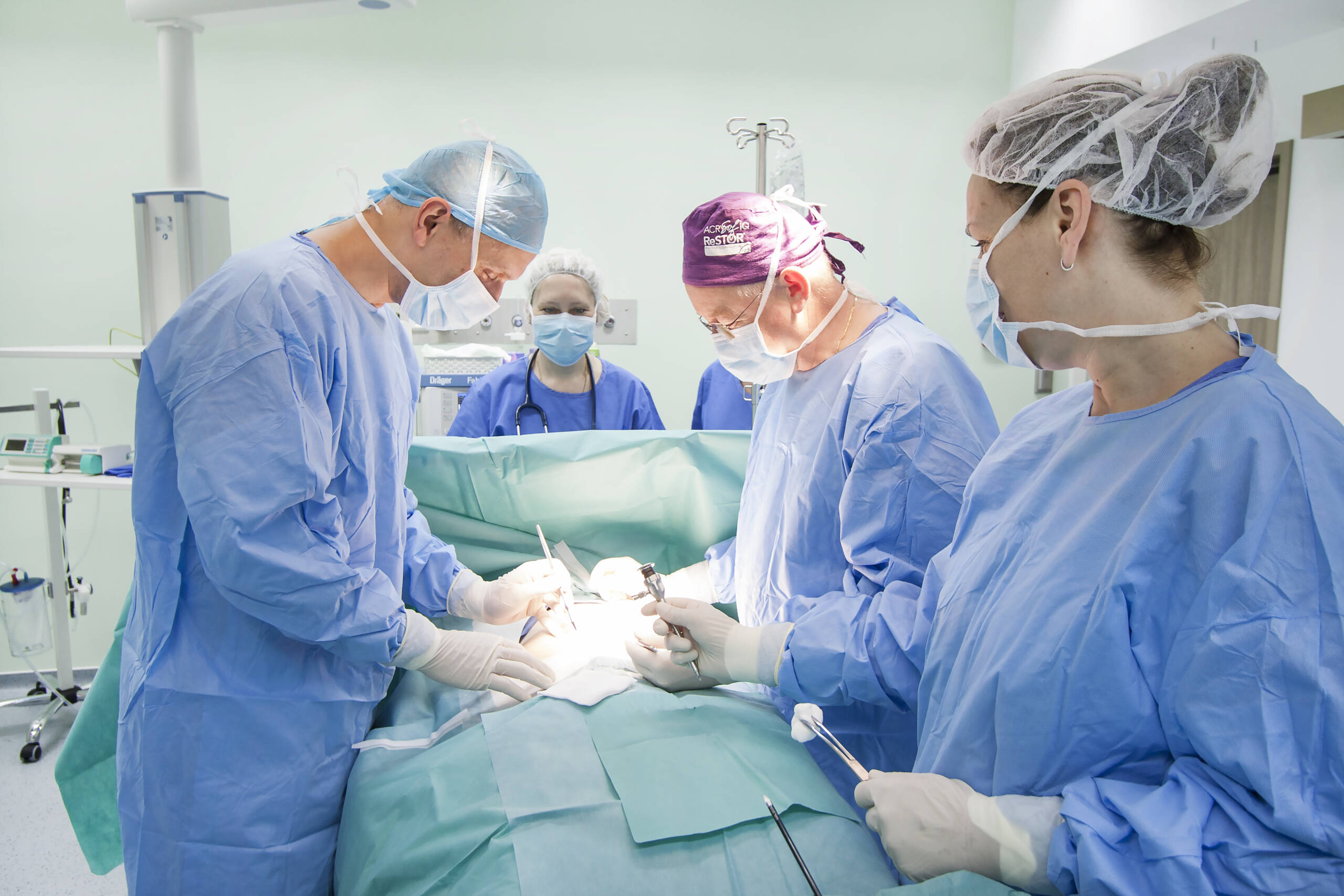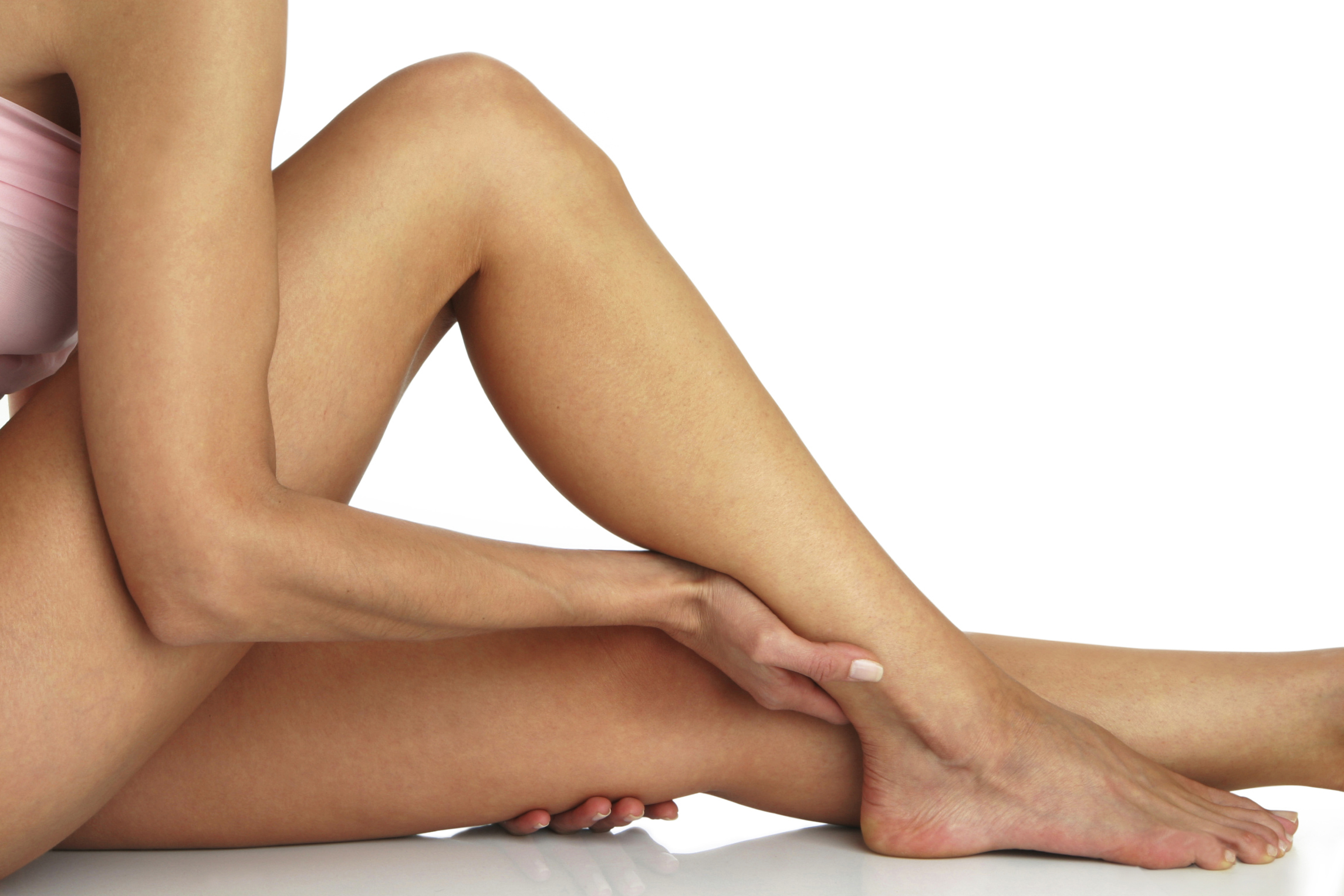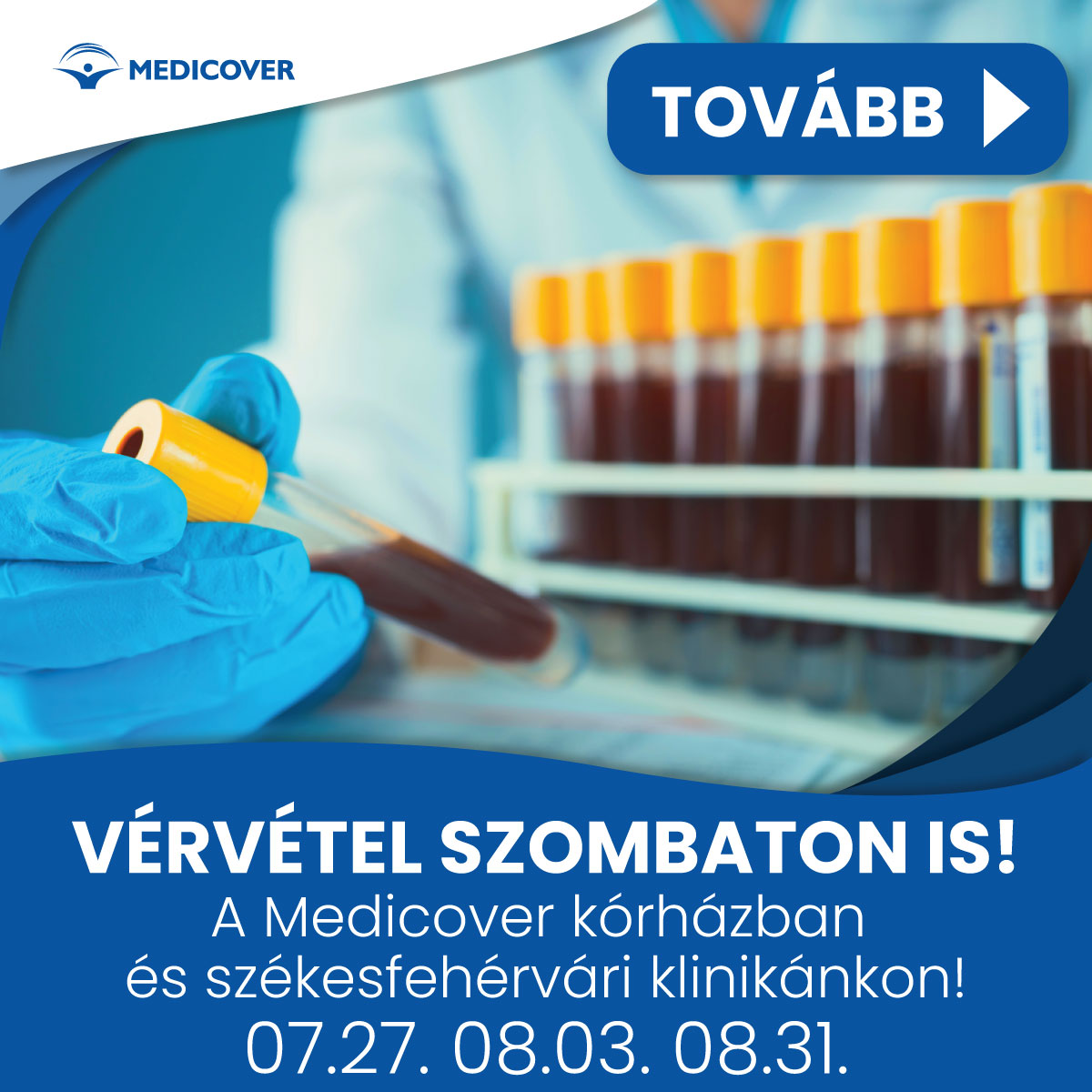Laser varicose vein surgery (EVLA)
What is a varicose vein?
The blood vessels network throughout our bodies, delivering essential oxygen to the tissues. While the blood vessels carry oxygen-rich blood from our hearts, the varicose veins ensure the removal of carbon-rich blood from the tissues.
Varicose veins (more precisely varicose veins disease) are thus insufficient functioning and disease of these veins.
Several types of disease can affect this type of blood vessel, of which varicose veins are the most common, and it is also known in common parlance as “I have varicose veins”.
In varicose veins, the blood vessel wall abnormally thickens or dilates, so it does not do its job properly, that is, it does not efficiently deliver used, carbon-rich blood to the heart.
Varicose veins are mainly found in the veins of the legs and thighs, but can also develop elsewhere.
How do I know if I have varicose veins?

For many people, varicose veins and spider veins — a common, mild variation of varicose veins — are simply a cosmetic concern but for others it can cause aching pain and discomfort. Sometimes it can lead to more serious problems as well. Varicose veins may also be a signal of higher risk of other circulatory problems.
Varicose veins may not cause any pain but have signs you may have with varicose veins, including veins that are dark purple or blue in color, and veins that appear twisted and bulging, often like cords on the legs.
- Swelling of the ankle and foot, especially at the evenings
- Pain, sensitivity, and heaviness in the legs
- Visible, lumpy veins
- Cramps in the lower leg
- Itchiness and edema
- Injuries that occur on the affected leg bleed more and heal slower
- Discoloring of the skin
If you leave it untreated it could lead to:
- Dry, thinned skin
- Phlebitis (inflammation of the veins)
- Ulcers on the leg which do not heal over time
- Thrombosis
When you are experiencing the symptoms mentioned above it’s advised to seek medical attention. The sooner the problem is recognized the better the chances are for a full recovery.

Why do veins become varicose?
Varicose veins affect up to 20 % of the population since humans started walking on two feet our legs have to carry an increased amount of weight. Because of this the valves inside our veins can be damaged sooner, leading to inadequate functioning.
However other factors are associated as well with the development of varicose veins:
- Gender: Women are more prone to developing this disease because the female hormones have a relaxing effect on the walls of the veins. With this increased diameter even the properly working valves can’t do their job thus blood flows backward.
- Genetics: varicose veins may be partly caused by your genes, your risk of developing them is increased if a close family member has the disease.
- Age: As time passes, veins start to lose their elasticity and the valves inside them stop working as well.
- Obesity: overweight puts extra pressure on your veins, which means they have to work harder to send the blood back to your heart. This can put increased pressure on the valves, making them more prone to leaking.
- Occupation: jobs that require long periods of standing may increase your risk of getting varicose veins.
- Pregnancy: added pressure on the veins in the legs by the weight of the growing fetus and the relaxation effects of the hormones estrogen and progesterone on the vein walls contribute to the development of varicose veins during pregnancy.
How can you treat varicose veins?
The exact treatment always depends on the severity of your condition:
As lifestyle choices also play a huge part in the development of varicose veins, in mild cases it might be enough to change bad habits:
Moderate alcohol consumption, stop smoking and losing weight can work. Being overweight is especially hard on our body and veins, as more weight means more pressure.
You should avoid lifting heavy objects and standing still for a long period of time because these activities put an increased strain on our legs. When your job requires standing for a long time try to exercise your legs often.
It’s recommended not to wear heels, tight clothing or to have long hot baths.
However, if your condition is severe, surgery is the option you can choose. This eliminates the risks for complications like thrombosis, pulmonary embolism or leg ulcers. Nowadays there are different surgeries (stripping or laser) available from which your doctor chooses the one that suits you most.
You should use compression stocking in every case of varicose veins. This supports the walls of your veins.
Beside all this, you can do a lot for the health of your veins with some exercise. You can do some of them even at work: draw circles in the air with bending your ankles, imitate the movements of cycling, stand up on your tiptoes and stand back.
How does the procedure work?
At Medicover Hospital our vascular surgeons prefer laser surgery as the treatment for varicose veins because its smaller risk and faster recovery.
The EndoVenous Laser Ablation (EVLA) or treatment (EVLT) is the most modern method to treat varicose veins (EndoVenous means inside the veins). The surgery takes approximately one hour to complete.
During the surgery –based upon the location of your affected vein- you either lay prone or on your back. Your surgeon examines the veins with ultrasound to have a clear picture about the problem and the area where incision needs to be done.
The whole process is done with analgesics and if necessary general anesthesia as well so you won’t feel any pain or discomfort.
Next, your doctor injects a needle into your skin. Through this needle they can insert the laser and the camera into your vein. With the help of the laser they eliminate the problematic parts of the vein.
At the end of the surgery your doctor removes the laser and covers the pin-prick with a Band-Aid.
There’s no blood involvement which minimalizes the risks of infections and speeds up the healing process. After a few hours of observation you can leave the hospital to recover at home.
What are the benefits of the surgery?
- It’s a fast, routine procedure
- It can be done under local anesthesia
- There are no cuts, stiches
- You won’t feel any pain
- There are basically no side effects of the surgery
Is this surgery risky?
The biggest benefit of the procedure its safety. It comes with minimal risk and the number of side effects (pain, bruising, and thrombosis) can be reduced to zero if the doctor’s orders are taken seriously.
We suggest taking the following actions after the procedure:
Don’t overuse your legs in the next 3 to 4 days, relax as much as possible, don’t stand still for long periods or sit with your legs hanging. You should wear compression stocking up to 4 weeks to help your veins recover. After the 4 days of rest you should use your legs often but only do mild, not straining exercises. If you’re sitting try to elevate your leg to ensure the even blood flow.

When it is not recommended?
Before surgery –either you choose stripping or laser therapy- you will have a number of tests (bloodwork, chest x-ray) and a consultation. This helps your doctor to determine whether it’s safe for you to undergo the surgery or not.
However if you can’t stay active enough afterwards to prevent blood clots, surgery is contraindicated. During pregnancy or breastfeeding you cannot receive pain medications so you can’t undergo the procedure.
Should I choose traditional or laser therapy for my veins?
| Traditional surgery (stripping) | Laser surgery (EVLA) | |
| The complexity of the procedure | Consultation with an anesthesiologist, anesthesia, incision on the leg, sutures, 1-1.5 hour intervention | The procedure is shorter, the vein is destroyed by a laser through a needle point in the skin. There are no stiches, cuts and blood |
| Pain management | Conducted under general or spinal anesthesia | Local anesthesia is sufficient |
| Risks | There are risks associated with general anesthesia, bleeding, infections, blood clots and scarring | The only risk is thrombosis which can be greatly reduced by following doctor’s orders. |
| Rehabilitation | Slower and longer recovery, the patient can go home the next day | Outpatient surgery, the patient can leave on his own foot that day |
What to do after the surgery?
For 3-4 days after surgery, we recommend that you spare your legs as much as possible, do not stand still, do not sit with your legs hanging for long periods of time. It is recommended to wear compression stockings for 2-4 weeks, depending on the extent of the process. After a few days, however, it is recommended to use your foot actively, (of course not by performing the most exhausting exercises), so that the chances of thrombosis can be minimized.
It is advisable to shake the leg when lying down or sitting to ensure even blood circulation.
What is included in the price of the surgery?
The cost includes the surgery, as well as the cost of the hospital stay after the surgery and the follow-up check-up.
The fee for the preliminary specialist consultation and the pre-operative examinations are not part of the surgical fee, please inquire about the cost of these at our Customer Service agents.

